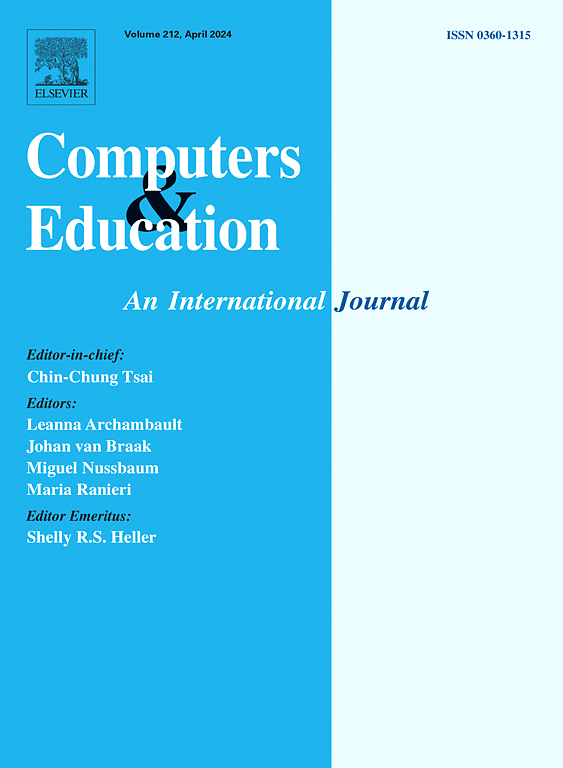Meaning particles and waves in MOOC video lectures: A transpositional grammar guided observational analysis
IF 10.5
1区 教育学
Q1 COMPUTER SCIENCE, INTERDISCIPLINARY APPLICATIONS
引用次数: 0
Abstract
This study employs transpositional grammar to analyze the structure of meaning in MOOC video lectures. An observation guide was developed using meaning forms in transpositional grammar – speech, sound, body, object, image, and text – as the superordinate categories and populated with sub-categories informed by a literature review, pilot study, and consultation with a panel of experts. Through a detailed examination of 25 video lectures, meaning forms are categorized as "particles" (discrete units) and "waves" (extended patterns). Transpositional grammar reveals how particles, like conversational cues, enhance accessibility, while waves, such as consistent narration and branding, create structural coherence and reinforce institutional presence. Findings highlight how transpositional grammar can elucidate recurring patterns in meaning-making, offering a framework for designing educational media that maximizes cognitive engagement in online learning contexts.
MOOC视频讲座中的意义粒子和波:一种换位语法引导的观察分析
本研究运用换位语法分析MOOC视频讲座的意义结构。通过文献综述、初步研究和咨询专家小组,我们开发了一个观察指南,使用换位语法中的意义形式——语音、声音、身体、对象、图像和文本——作为上级类别,并填充了子类别。通过对25个视频讲座的详细检查,意义形式被分类为“粒子”(离散单元)和“波”(扩展模式)。换位语法揭示了粒子(如会话线索)如何提高可访问性,而波浪(如一致的叙述和品牌)如何创造结构连贯性并加强制度存在。研究结果强调了换位语法如何阐明意义形成中的重复模式,为设计教育媒体提供了一个框架,使在线学习环境中的认知参与最大化。
本文章由计算机程序翻译,如有差异,请以英文原文为准。
求助全文
约1分钟内获得全文
求助全文
来源期刊

Computers & Education
工程技术-计算机:跨学科应用
CiteScore
27.10
自引率
5.80%
发文量
204
审稿时长
42 days
期刊介绍:
Computers & Education seeks to advance understanding of how digital technology can improve education by publishing high-quality research that expands both theory and practice. The journal welcomes research papers exploring the pedagogical applications of digital technology, with a focus broad enough to appeal to the wider education community.
 求助内容:
求助内容: 应助结果提醒方式:
应助结果提醒方式:


